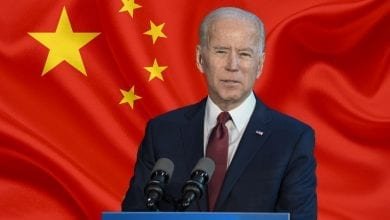Stimulus – Another victory for President Trump
Congress has finally passed a second stimulus package. This time, the package contained $900 billion worth of relief for American households and for business. House Speaker Nancy Pelosi back in May of this year, wanted a $3.4 trillion package, while President Trump did not want the package to exceed $1 trillion.
In spite of the politics being played, Trump won again. Pelosi could have had up to $1.6 trillion last October, but her desire to avoid any action that could benefit Trump at election time meant she decided to wait until after November 3.
Trump wanted to strike a reasonable balance between economic stimulus and huge government budget deficits. While there is near-unanimous consent that a second stimulus package is needed, the resulting multi-trillion-dollar budget deficit is very problematic.
That’s because when the government incurs a deficit, bonds are sold to raise the funds to pay for the extra spending. The problem is that there is no mechanism in place to ever pay this money back. When the bonds mature and must be repaid, new bonds are sold to pay off the original bonds, as the debt is “rolled over.”
That means the public debt, which is the total of all deficits, continues to grow. With the passage of this stimulus package and with continued government spending, the deficit for 2021 will be about $2 trillion. That will raise the public debt to more than $28 trillion.
Is a $28 trillion public debt a problem?
Most economists will say that as long as the public debt is less than one year’s GDP, it will not be a problem. Beyond that, problems will arise. GDP for 2020 was about $20.5 trillion meaning the total debt is nearly 1.4 times annual GDP. That’s a problem for two reasons.
First, even with today’s historically low interest rates, the interest on the public debt will be more than $400 billion annually. That’s about 10% of government spending and it’s $400 billion that can’t be used to fund needed programs.
Secondly, if the federal government is borrowing huge sums, there is less available capital for business to expand. That could slow growth and lead to rising prices. A stagnant economy with inflation could result, similar to the stagflation we saw in the late 1970s.
As a businessperson, Trump tried to find a balance between the need for stimulus to prevent the economy from sliding into another government lockdown induced recession and the need to keep the deficit to a minimum. He noted, way back in September, that he would approve $1 trillion in new stimulus.
The House did pass a second stimulus package of $3.4 last May. The Senate wanted a $600 billion package, so no compromise was reached Then in October, the House tried again and passed a $2.2 trillion package, but the Senate said they were only willing to go up to $900 billion. Again no compromise.
The President was eager to avoid any slowdown from the remarkable V-shaped recovery that began on May 1. He indicated to Pelosi, in October, that he would agree to $1.6 trillion and he could get the Senate to go along. But Pelosi said no, likely because she didn’t want to give Trump any boost to his election chances.
By waiting Pelosi lost. She is now forced to settle on only a $900 billion bill, defensibly claiming she will get more once a new administration is sworn in on January 20. If the GOP retains control of the Senate, that likely will not happen.
What’s in the stimulus package that has been passed?
There is more free money for nearly every American household that paid income taxes in 2019. A family of four will receive $2,400. There is also $300 per week for unemployed Americans on top of the unemployment benefit paid by their state. These two payments are meant to give households extra money to spend which will help those truly in need and will stimulate the economy.
There is also money for business to keep them afloat during the shutdowns. This is an extension of the Payroll Protection Program passed in the first stimulus package. Other spending includes funds for schools and universities, which have closed during the shutdowns. Funds are also included for assistance to Americans unable to pay their rent as well as funds to speed the delivery of the virus vaccines.
This package was really needed in October. A responsible government should have passed this bill then. But our government leaders seemed more concerned with winning elections than doing the right thing for all Americans.
In the end, Trump won and Pelosi lost.



